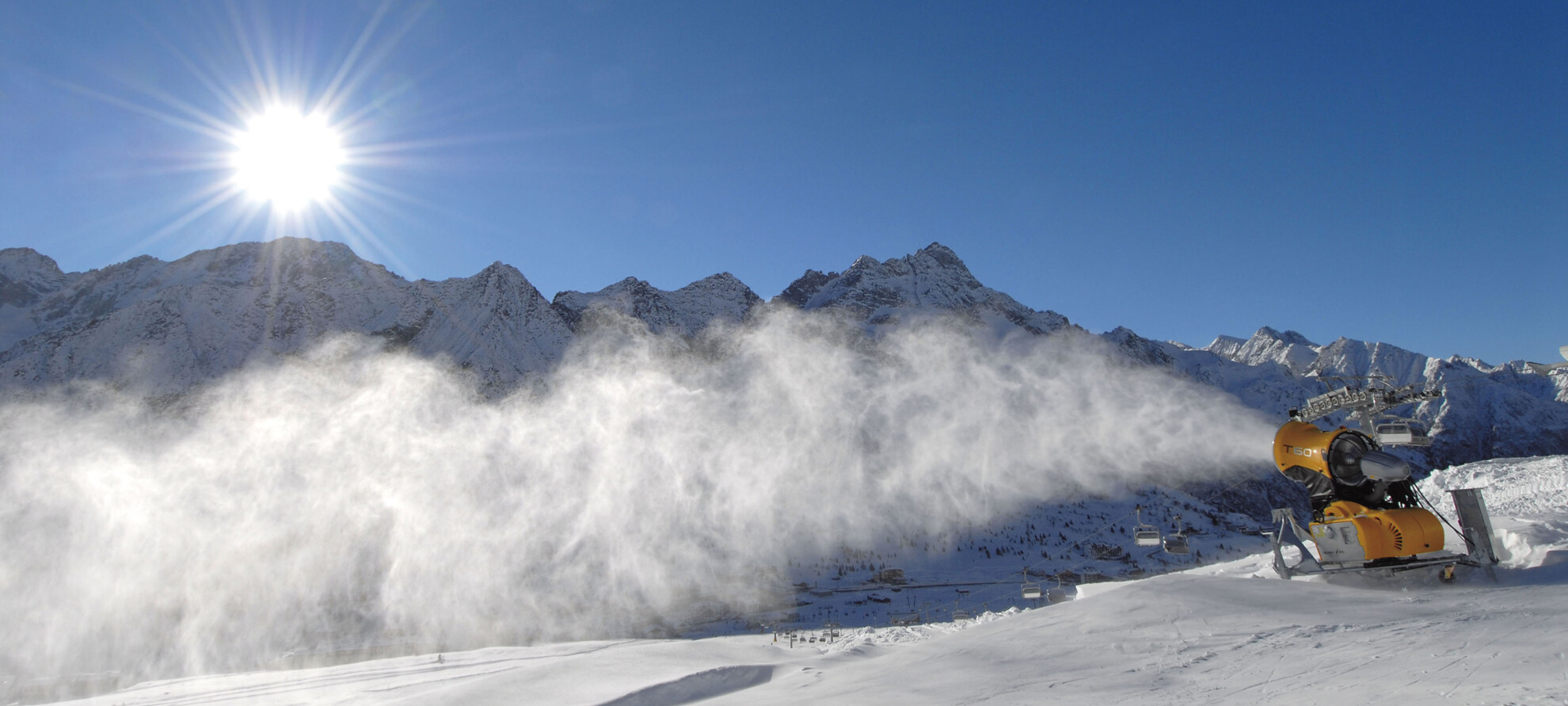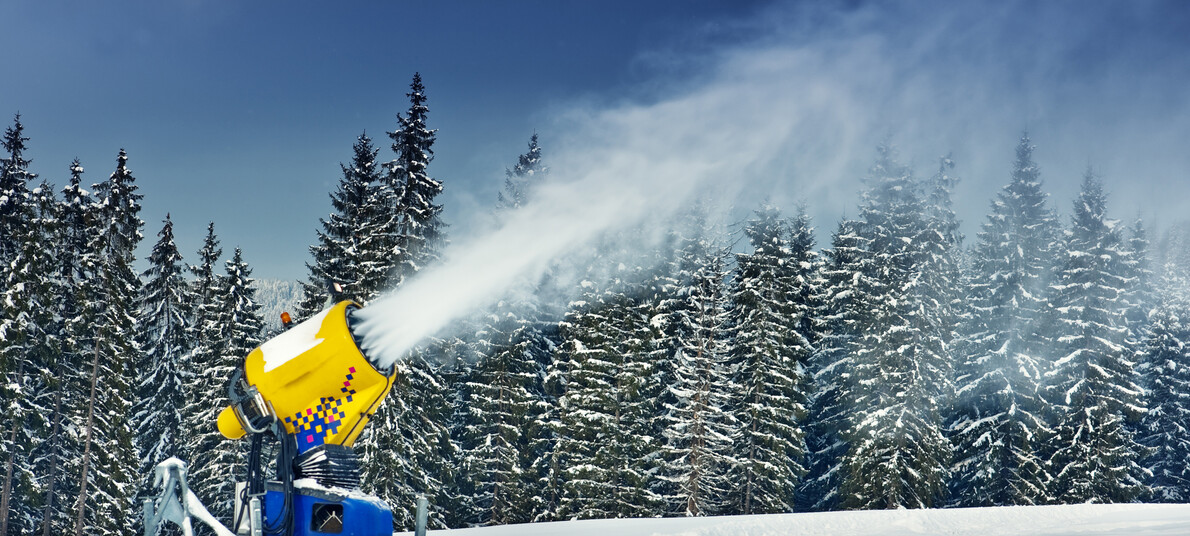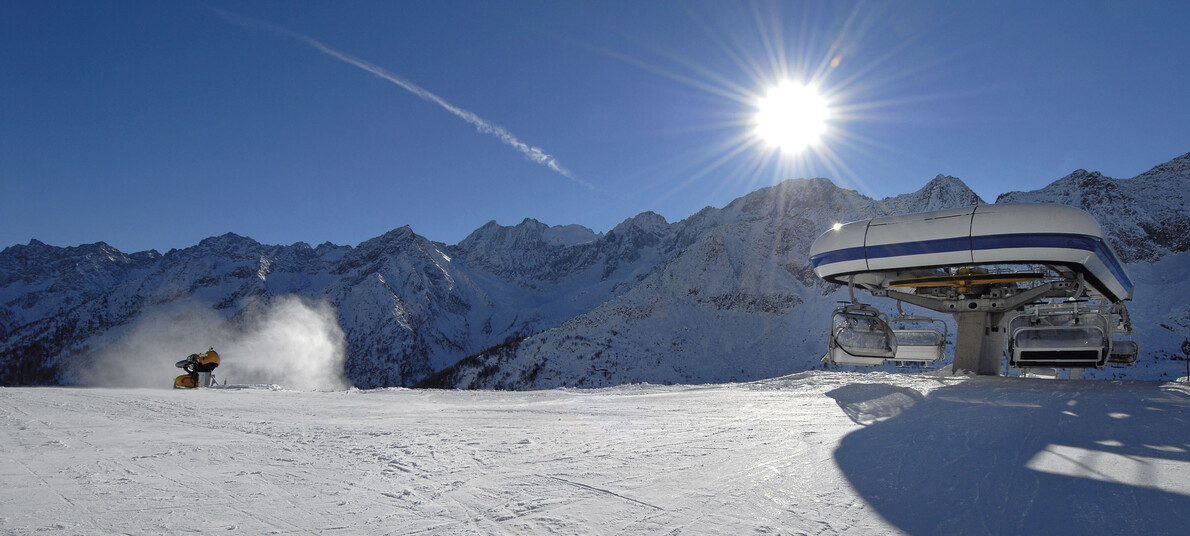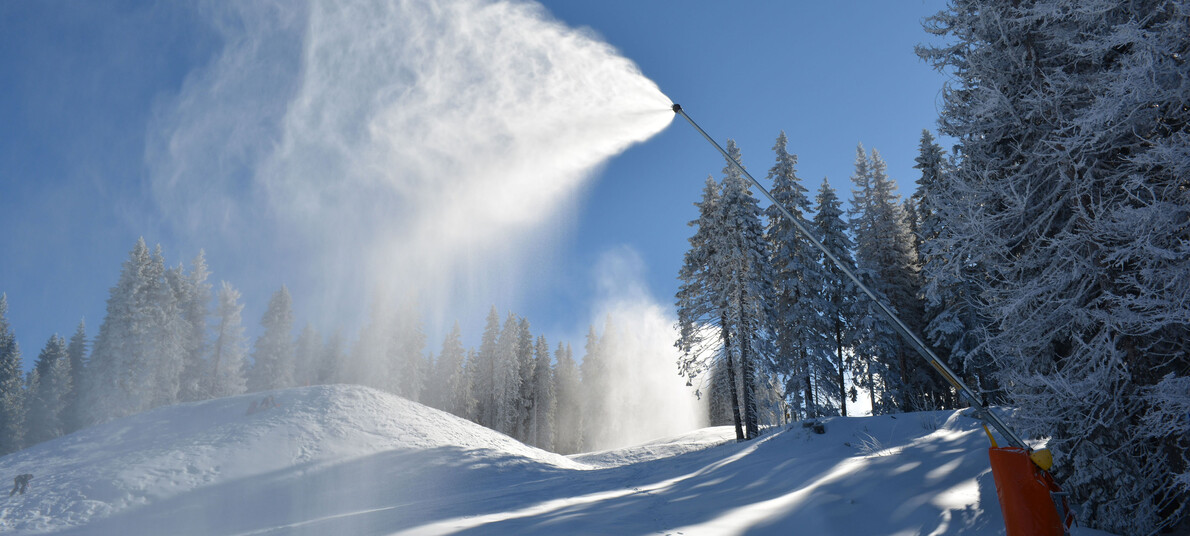Snow on demand in Trentino: how it works
Ski-lift facilities up and running, perfect ski slopes even without natural snowfall. All this thanks to investment, technology and innovation
What’s all this about guaranteed snow? How is it made? Is it any different from “natural” snow? In this article we answer these and other questions in the hope of dispelling any doubts and correcting any misunderstandings.
1. How much snow can snow-making facilities produce?
In Trentino, guaranteed snow making systems were first installed in the early 1980s. Today, thanks to important investments in infrastructure and technology and with simple ingredients such as air and water, it’s possible to guarantee quality snow cover across 90% of available ski runs. In this way it’s possible guarantee great skiing every winter even in the case of anomalous weather conditions and low snowfall.
2. What’s guaranteed snow made of?
Guaranteed snow is quite simple to make. All you need is a balanced combination of two natural elements: water and cold air that, thanks to snow cannons, reproduce the natural phenomenon we all know and love, snowflakes. The ideal time for producing guaranteed snow is in windless, relatively dry conditions and with temperatures of about -3°C.
3. What water is used?
Non-potable water is used in the process of snow production and therefore does not affect human consumption in any way. Indeed, the water employed usually derives from the collection of rainwater and run-off. No chemical additives or thickeners are used in the process and so the water used to make the snow, once it melts and evaporates, is eventually returned to the water table without altering its characteristics.
Important technological investments, aimed mainly at the renovation of the snow making facilities, have helped to greatly reduce the amount of water needed for the controlled production of snowflakes and, at the same time, cut energy requirements through the use of more efficient generators. Today, from 1 cubic metre of water it’s possible to produce 2 cubic metres of snow.
4. How is guaranteed snow produced?
A snow making system is made up of a number of key elements: a water catchment basin or reservoir, a pumping station, cooling towers, a control centre, a power plant, pipelines which run beneath the slopes and of course the generators, or rather the snow cannons themselves, be they fan guns or snow lances.
To simplify things, the production process for guaranteed snow can be summarised as follows: water is taken from the catchment basin and then pressurised and fed through the pipelines before being nebulised by the generators. These tiny droplets of water, once they come into contact with the cold air, freeze almost instantly, creating the first condensation nuclei. This process replicates the beginning of the natural process which gives us snowflakes.
Once the first frozen condensation nuclei are created, and with a ready supply of nebulised water, the crystals grow in size and weight until they float down to the ground. Here too the process mirrors its natural counterpart.
5. What exactly are catchment basins?
Due to increasingly uncertain air and weather conditions it has become necessary to produce and accumulate guaranteed snow within limited time periods. To do this, a large and readily available water supply is vital. Many ski areas have equipped themselves with catchment basins in the vicinity of the ski slopes from which they can directly pump the water that’s needed to produce guaranteed snow. The water, which is non-potable, derives from the rainfall and run-off accumulated during wetter periods and its collection is however strictly regulated by the offices of the Provincial Authority.
What might have seemed like an obvious setback for guaranteed snow production has become a strategic opportunity: increased investment in infrastructure by ski areas in the creation of water catchment basins has today brought added value to the surrounding territory. Indeed, such abundant supplies of water are not only used to produce snow, but also for agriculture, fire prevention and even as tourist attractions in the summer months.
6. But is guaranteed snow really snow?
You might have heard that guaranteed snow is too icy and therefore less suitable for beginners. Actually, such a claim is unfounded. Guaranteed snow, as we explained earlier, is created through the very same physical and chemical processes as its natural counterpart: it’s snow, no strings attached!
The application of this technology when combined with the management of the ski runs, painstakingly overseen by a small army of 1,500 people between cableway supervisors, technicians, snow cat operators and numerous other collaborators, guarantees great skiing and safety for all.




